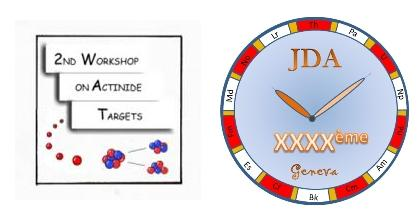Speaker
Dr
Colin Morton
(TRIUMF)
Description
Since the first Workshop on Actinide Targets in 2006, two such targets have been used successfully for RIB production at TRIUMF’s ISAC facility. In a test run in August/September 2008, a uranium oxide target coupled to a surface ionization source was irradiated with ~300 µA•hrs of 500 MeV protons and RIB yields were measured at the ISAC yield station. In a follow-up run, in December 2009, a similar target coupled to a FEBIAD ion source was irradiated with ~425 µA•hrs of protons and RIB were delivered to an experimental location. In both runs it was demonstrated that such targets could be used safely within the existing ISAC infrastructure. As a result, TRIUMF now has regulatory permission to proceed with regular irradiations at low proton currents.
Despite the low-current nature of these runs, it was necessary to install new radiation monitoring systems and implement new procedures for the handling of targets and target modules. The experience gained from these runs and from the use of these new systems and procedures (and from ongoing operation with non-actinide targets) is being incorporated into the design specifications for the future ARIEL facility at TRIUMF. ARIEL, the Advanced RadioIsotopE Laboratory, will have the capability (pending a funding commitment from the Canadian government) of producing RIB via ~500-MeV proton-induced reactions as at ISAC and via photofission using a new 50 MeV, 100+ kW electron-linac driver. Two new target stations will be built to accommodate RIB production and coupled into the existing ISAC beamline and accelerator complex. The impact of TRIUMF’s actinide target program on the design of the target stations and their related infrastructure will be discussed.
Primary author
Dr
Colin Morton
(TRIUMF)




